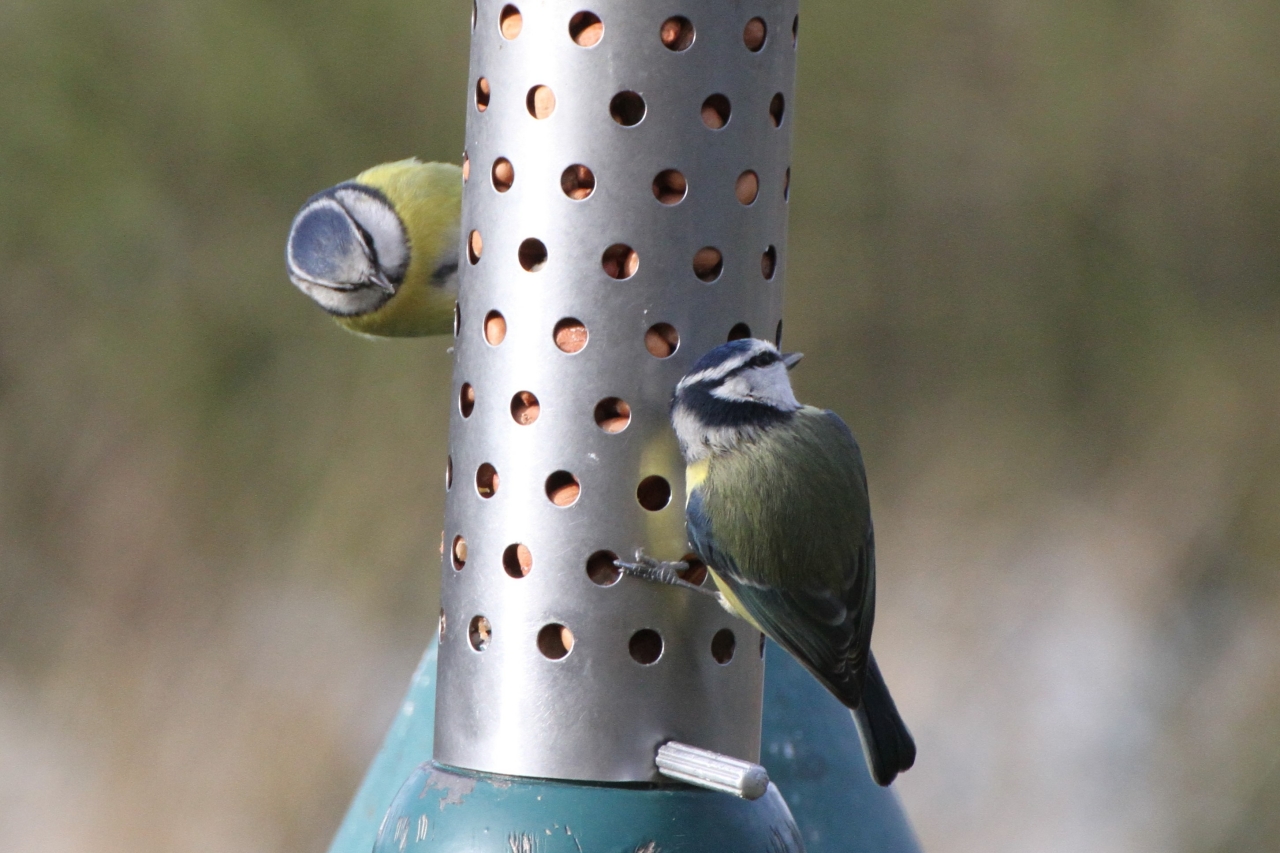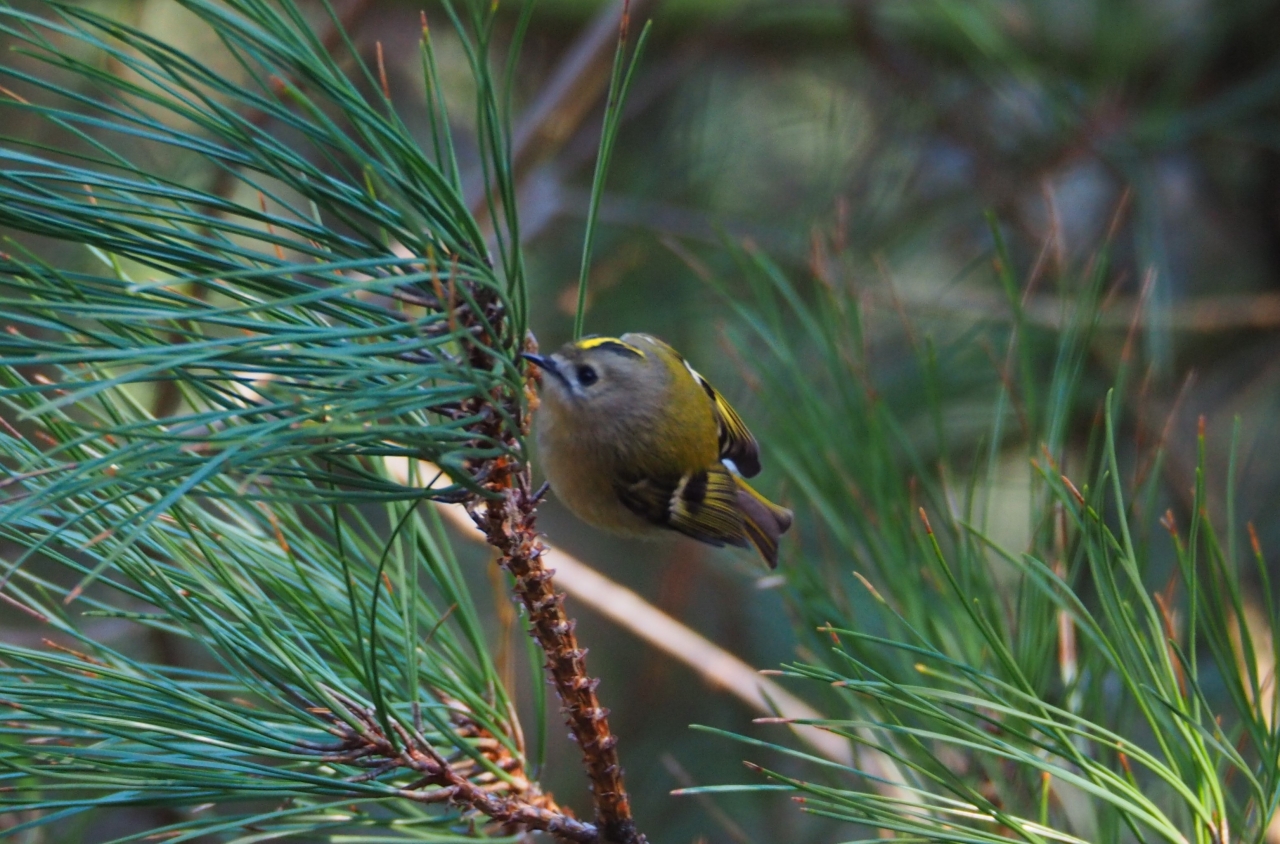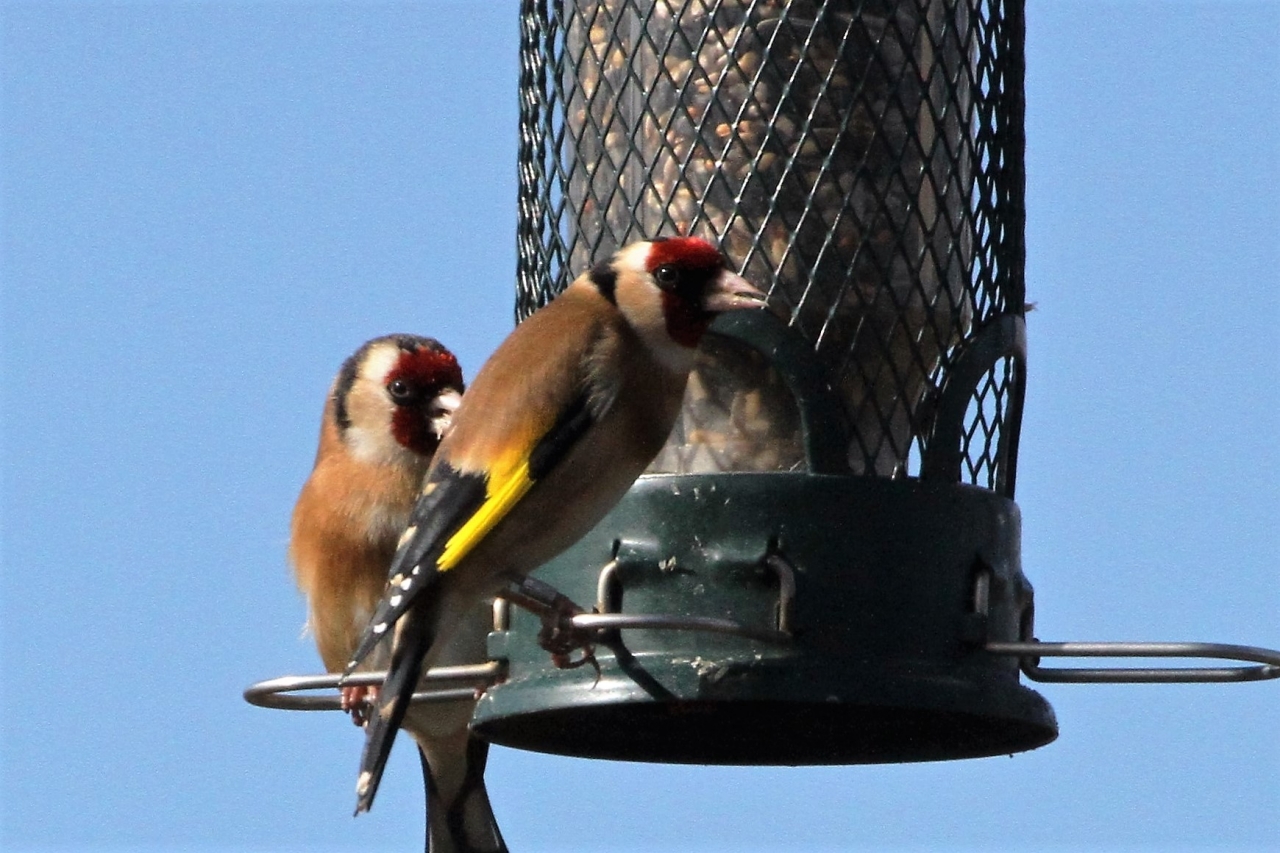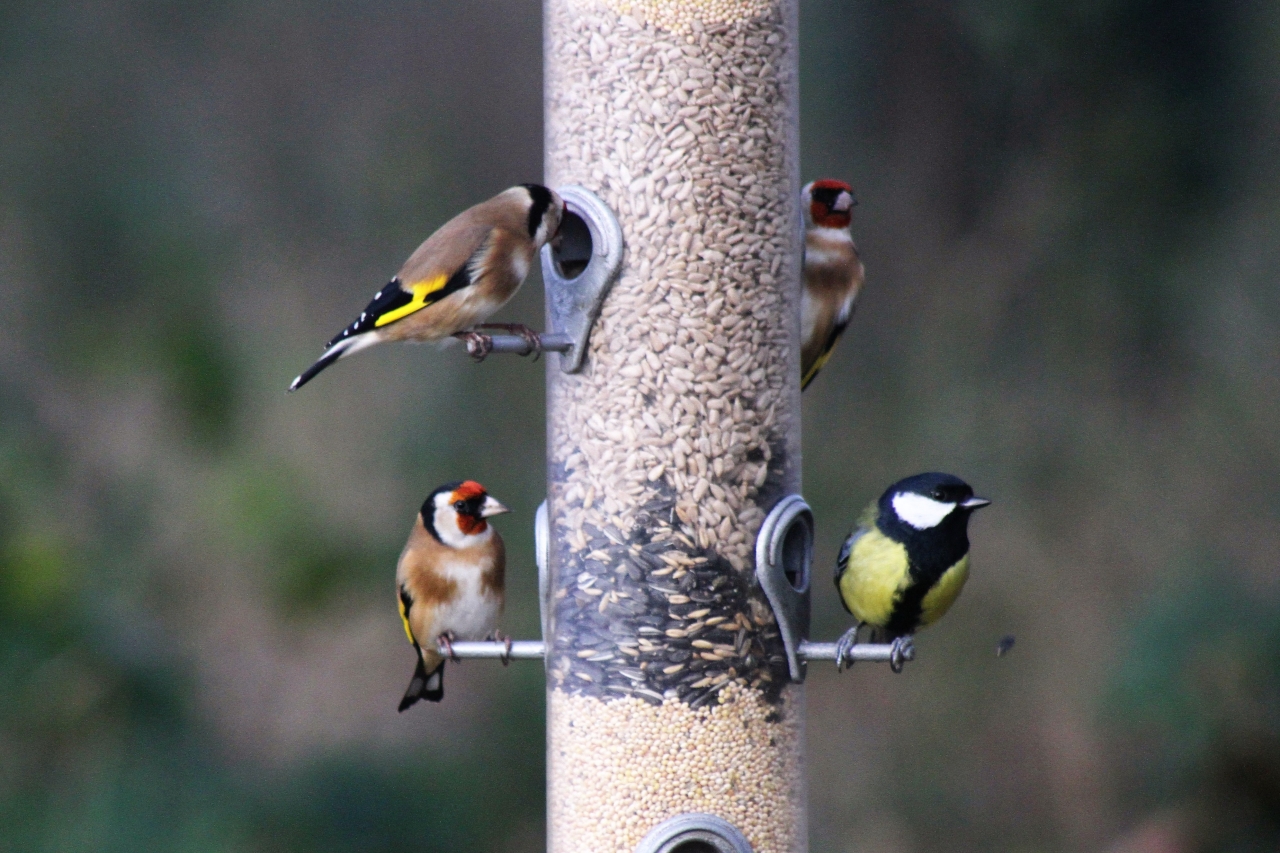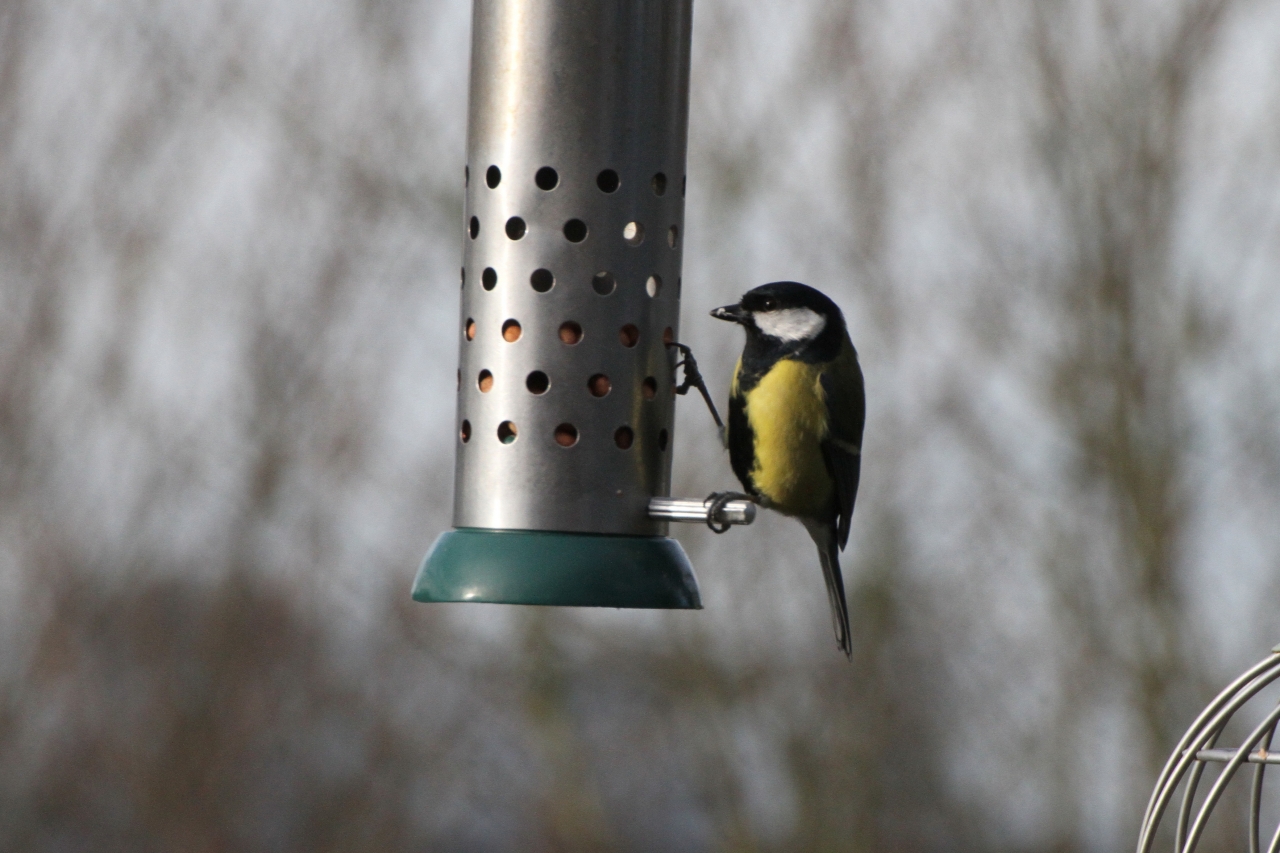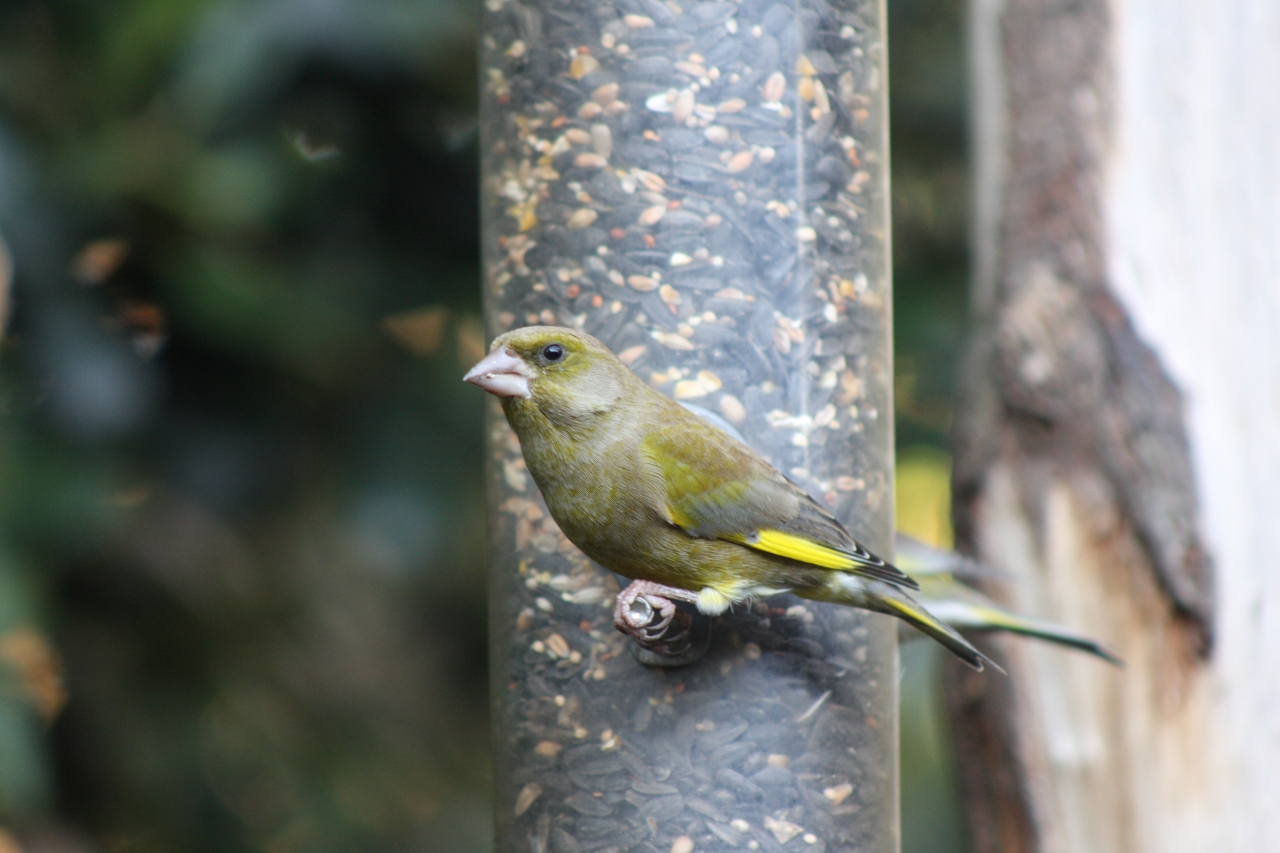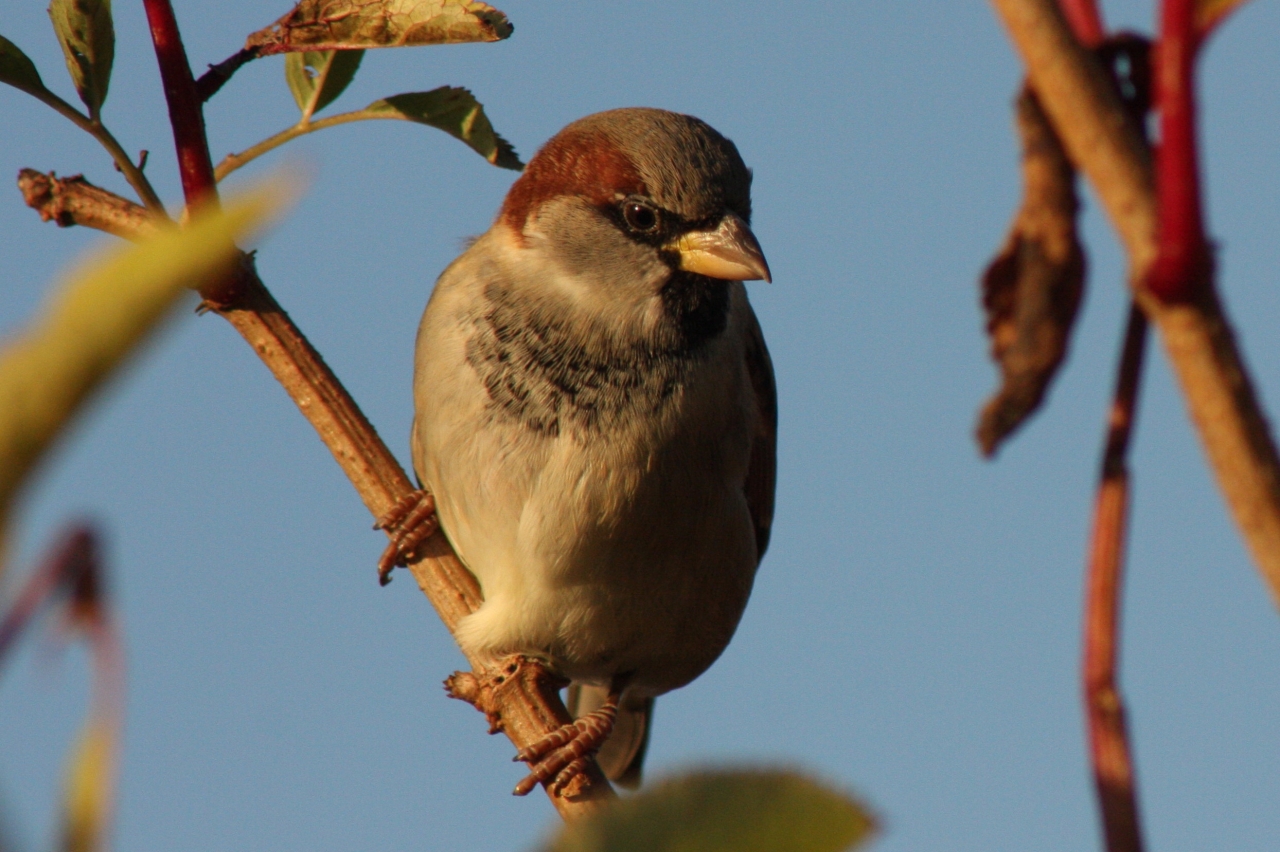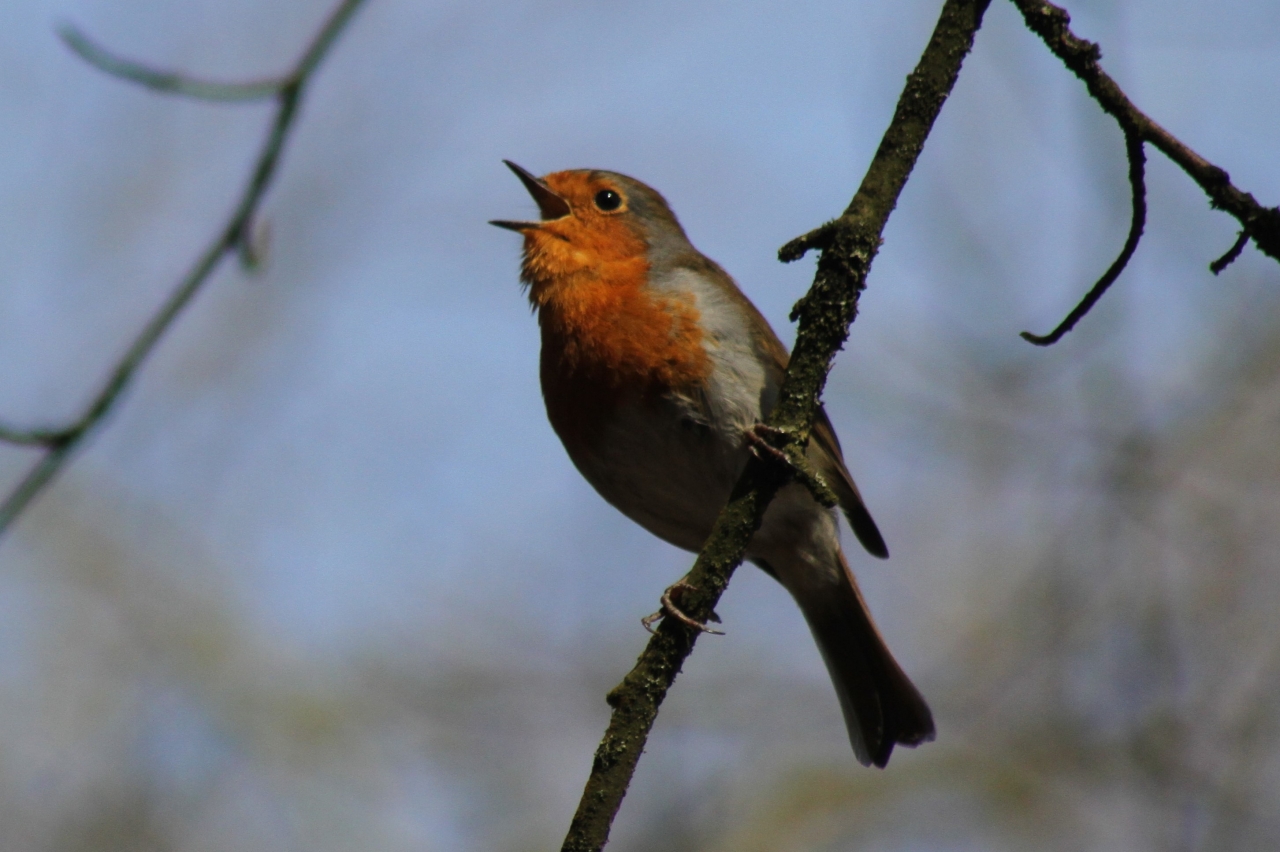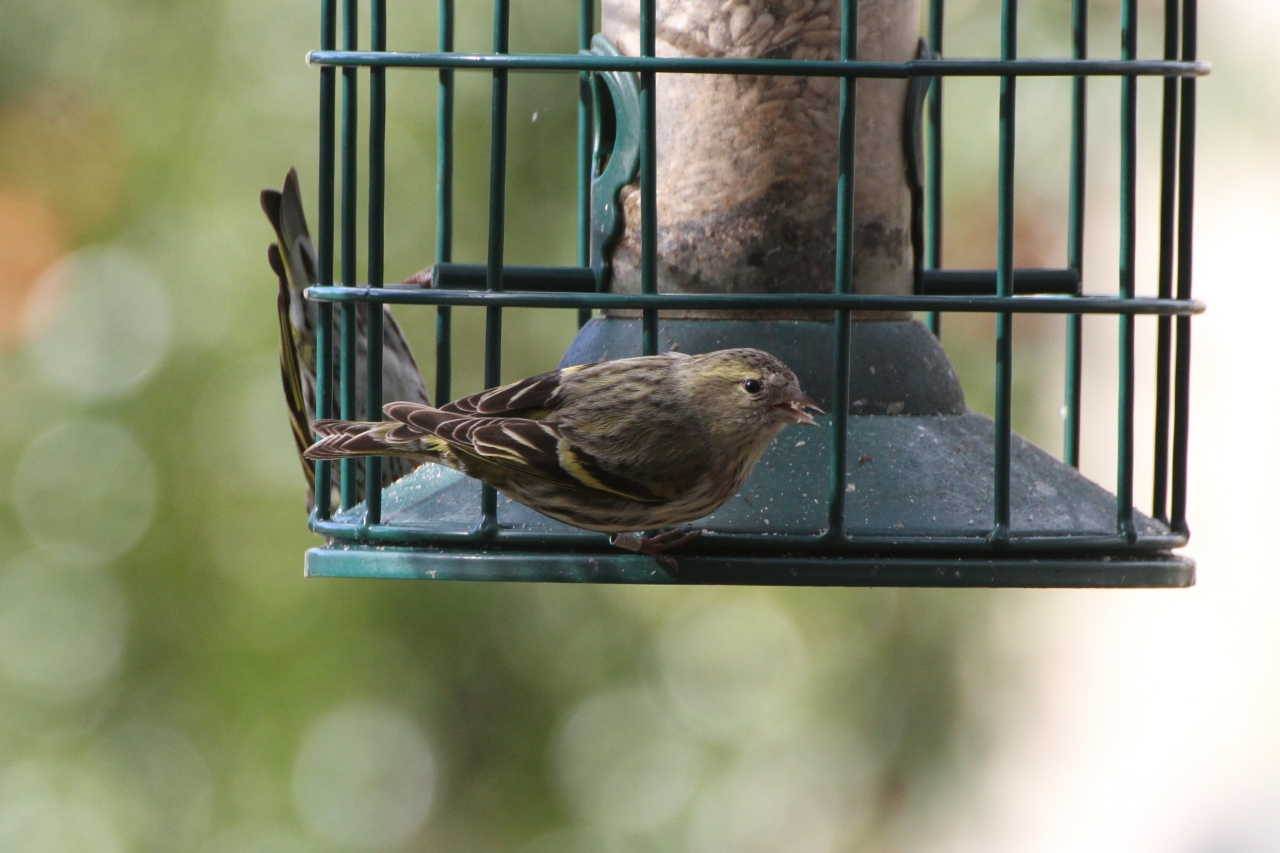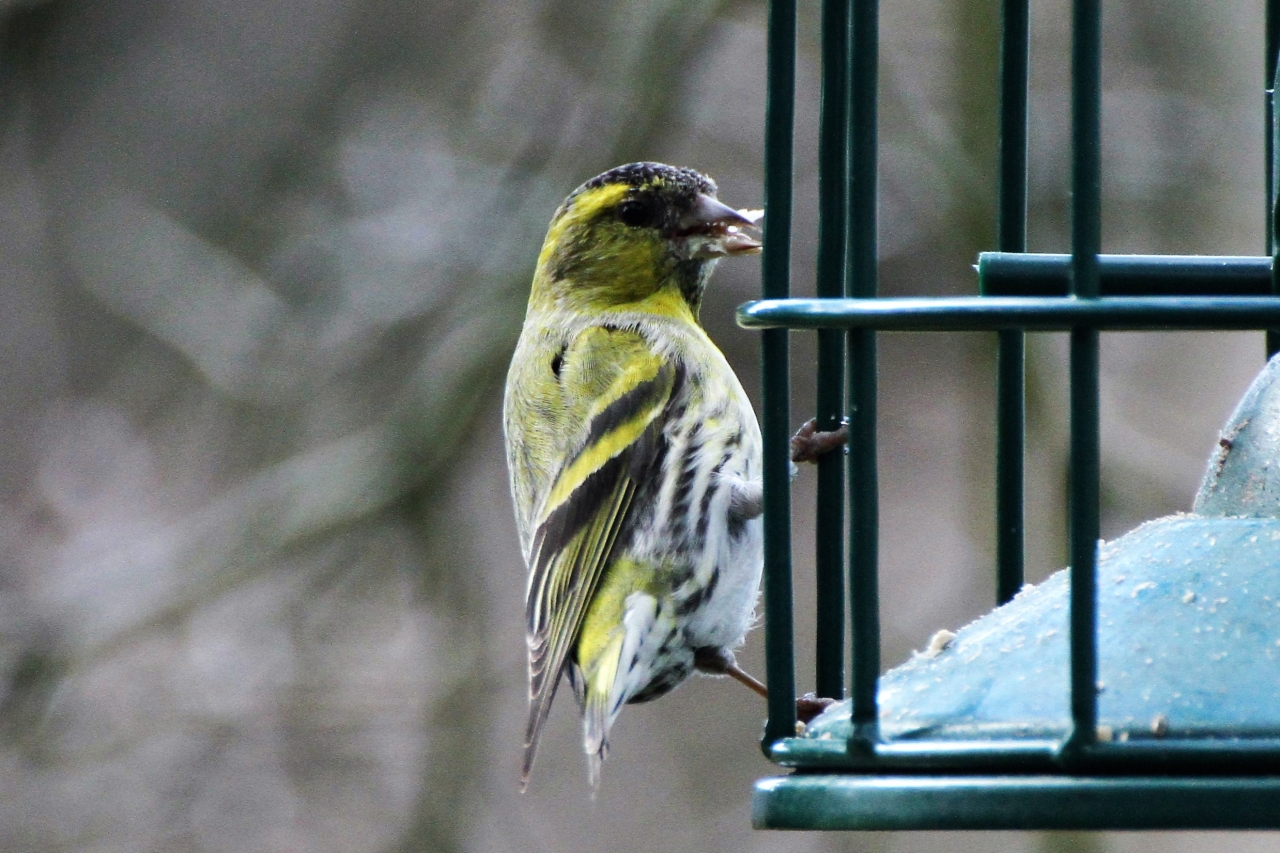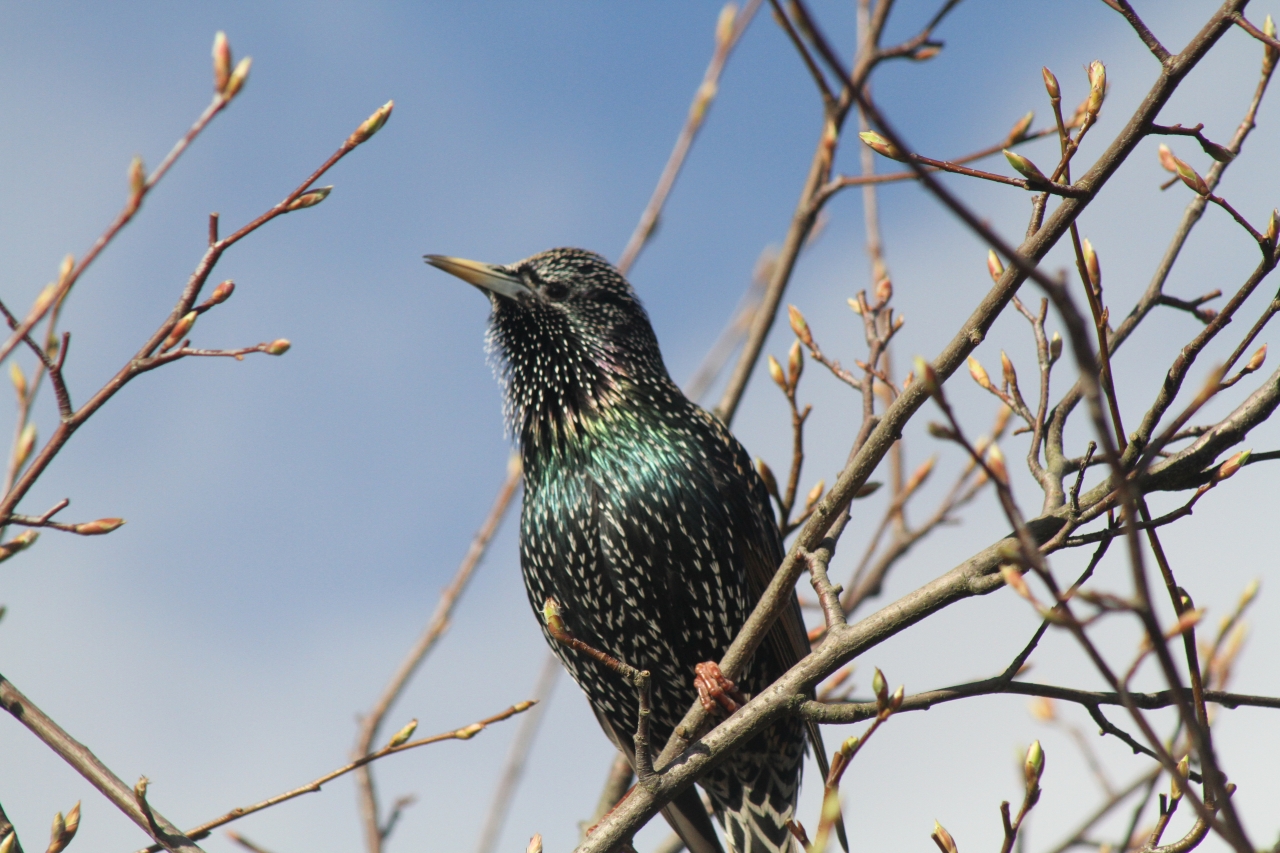

The wonderful warm and sunny weather we’ve experienced this autumn, has given us fantastic colours in the countryside, and the fields and hedgerows are still good sources of food for our wild bird population. At the first sign of cold this week however, we’ve seen an influx of good numbers of small birds into the garden, and I’m sure that most people will begin to see this throughout the village in the days ahead. There are so many different types of feeders and foods available these days, that whatever you provide will probably have little difficulty in tempting our feathered friends to visit. You will see a variety of types of feeders in this article, and all seem very successful.
Identifying birds is an art in itself, but patience, a good bird guide and well stationed feeder(s) or bird table will soon help you to get to know your feathered visitors. A pair of binoculars will also help. Most people will probably recognise a blue or great tit, but the smaller coal tit is more difficult. The best clue is to look for a white stripe down the back of its black head. Don’t confuse it with a male black cap, which is a rarer visitor to Christleton.
The finch family will usually be represented in this area by the chaffinch, goldfinch and greenfinch, although highly coloured bullfinches are possible. Greenfinches, which have been missing for some years have now started breeding again in the village, and might just be confused with the much smaller siskin. I hope the photographs with this article help to show the difference. Beautiful goldcrests which are tiny, even smaller than a wren, have had a really good breeding season and can be seen searching the bark of trees for food. They could even be mistaken for a wintering chiff chaff, but look for its tiny, almost round body, and then a bright yellow stripe on its head. Dunnocks (hedge sparrows) have a very whispy call, and are nowhere near as noisy as their house sparrow neighbours. Dunnocks have a very slender bill, as distinct from the stronger characteristic finch like bill of the rest of the finch family.
Robins have been singing loudly since the end of September, and are probably one of the easiest birds to identify. Wrens on the other hand, although extremely loud are very secretive and can be best identified by their size, colour, and short cocked tail. Starlings, highly coloured and streamlined in appearance are also coming back into the village. They are quite noisy and almost seem to bully other birds near bird tables /feeders. The numbers at present are smaller than in previous years, but we might expect to see huge clouds of them in the next few weeks. Two years ago this happened spectacularly in Great Boughton, near Boughton Hall, and also at playing fields in Vicars Cross. The Runcorn Bridge area is also a good place to see this wonderful wildlife spectacle. Next month I’ll identify other rarer visitors to your gardens, including the wintering thrushes which are already starting to appear locally.
-

Blue Tits
-

Chaffinch
-
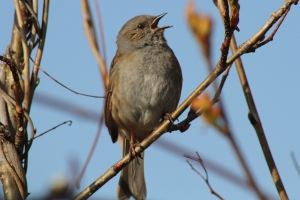
Dunnock
-
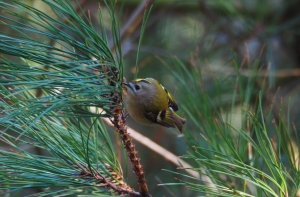
Goldcrest
-
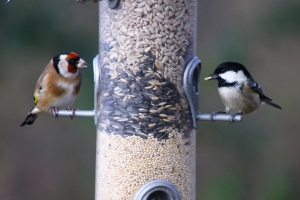
Goldfinch and Coal Tit
-
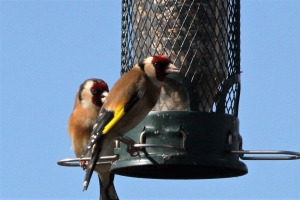
Goldfinch
-
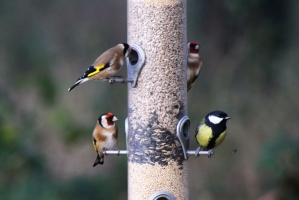
Goldfinches and Great Tit
-

Great Tit
-

Greenfinch
-

House Sparrow
-

Robin
-

Siskin - female
-

Siskin - male
-

Starling

